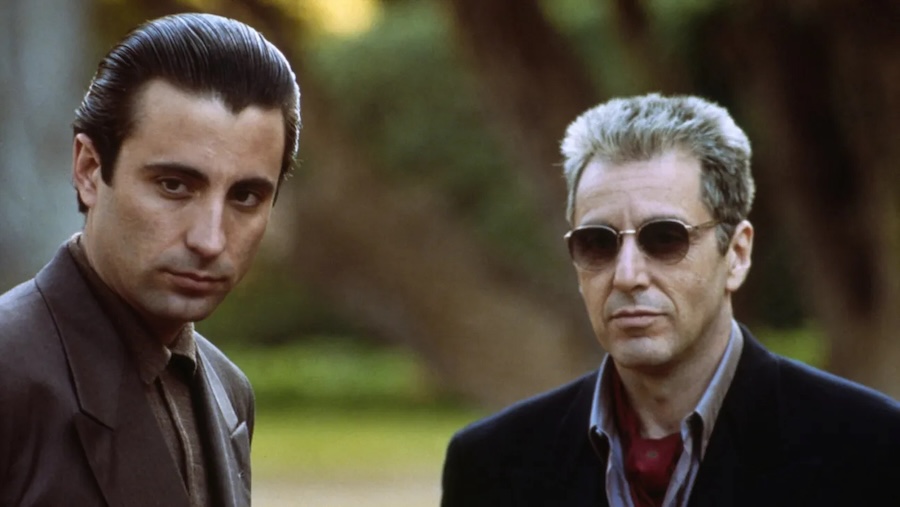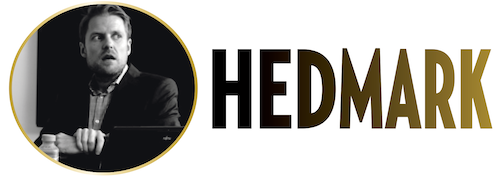
REAL POWER CAN’T BE GIVEN. IT MUST BE TAKEN.

If you are a die-hard fan of the Godfather films you are supposed to hate the third one, but I find that very hard. I know, the only reason why Francis Ford Coppola made the movie seemed to be money, we’ve got George Hamilton instead of Robert Duvall, and then there’s Sofia Coppola. But when it comes down to it, number three is a very compelling and logical continuation of the story.
Close to the church
The year is 1979 and Michael Corleone (Al Pacino) has become the most powerful Don in the country. In New York City he’s known as a tremendously wealthy businessman with close ties to the Vatican Church. He has recently donated $100 million to the Church for charities and now he’s trying to buy the Vatican’s shares in Immobiliare, a major real estate holding company. The deal would make him one of the richest men in the world but it is also part of Michael’s plan to turn his entire empire legitimate. However, the other Mafia bosses want in on the deal and Michael discovers once again that it is impossible to abandon the old ways of his family.
Meantime, Vincent Mancini (Andy García), Sonny Corleone’s illegitimate son, is dating Michael’s daughter Mary (Sofia Coppola) and does his best to win the Don’s confidence.
A logical next step
Meeting the Corleones again two decades later is fascinating. We learn that in spite of what Michael did to Connie’s husband, she’s now very active in the decision-making. Kay is still resentful toward her ex-husband and his son wants nothing to do with the family business. Michael himself is visibly older; Pacino, somewhat hunched, plays him as a tortured soul. The murder of Fredo is what will send him to hell and he knows it, even if he’s doing his best to make amends with God (whose church is ironically portrayed as governed by something akin to the Mafia, the Vatican). The film’s religious ingredients didn’t appeal to everybody, but it’s a natural step; Michael was always a devout Catholic and his old-age angst is understandable. The film follows a traditional pattern, opening with a celebration and ending in a bloody showdown, this time of operatic size, delivering yet another figurative bullet to Michael’s heart.
There’s a thrilling helicopter attack against Michael and the other bosses, and there’s no doubt that Coppola once again hits the right note.
The final half-hour is a little bloated and the film does really suffer from Sofia Coppola’s amateur performance, which wouldn’t have mattered so much if her part wasn’t so significant. Another drawback is García who’s only adequate as Sonny’s equally hot-headed bastard son. But Hamilton is not a problem as the new, discreet consigliere and several ingredients are great. I love the opening shot of the abandoned Corleone house in Lake Tahoe, the scene of so much tragedy. There’s a thrilling helicopter attack against Michael and the other bosses, and there’s no doubt that Coppola once again hits the right note. Especially in a scene where Michael confesses his sins to a startled cardinal.
The last scene takes place in 1997, according to the online “official family tree”. It also shows that Vincent is still Don Corleone today and is 61 years old. Time to look for a successor? Hmm. The fact that people are still chronicling the family online shows that we’re so fascinated we tend to think of the Corleones far beyond the movies.
The Godfather, Part III 1990-U.S. 161 min. Color. Widescreen. Produced and directed by Francis Ford Coppola. Screenplay: Francis Ford Coppola, Mario Puzo. Cinematography: Gordon Willis. Music: Nino Rota, Carmine Coppola. Song: “Promise Me You’ll Remember” (Carmine Coppola, John Bettis). Production Design: Dean Tavoularis. Cast: Al Pacino (Michael Corleone), Diane Keaton (Kay Corleone), Talia Shire (Connie Corleone), Andy García, Eli Wallach, Joe Mantegna, George Hamilton, Bridget Fonda, Sofia Coppola, John Savage.
Trivia: Winona Ryder and Julia Roberts were considered for the part of Mary Corleone. Robert Duvall was offered to return as Tom Hagen, but declined. Recut in 2020, with several changed scenes; that version’s full title is Mario Puzo’s The Godfather, Coda: The Death of Michael Corleone.
Quote: “Just when I thought that I was out they pull me back in.” (Pacino)
Last word: ”I didn’t know if there would ever be a Godfather III. There was always a lot of talk, but Francis wasn’t interested and I would never have done it without him. Francis has the feel for the material. […] I didn’t know if I could be that guy again. Seventeen years have gone by; a lot has happened. Michael’s not the most pleasant character. [But] Francis gave him more colors as he got older and matured. Just to have come through and still be alive — a character like that would have to have reconciled himself to certain things.” (Pacino, Entertainment Weekly)
